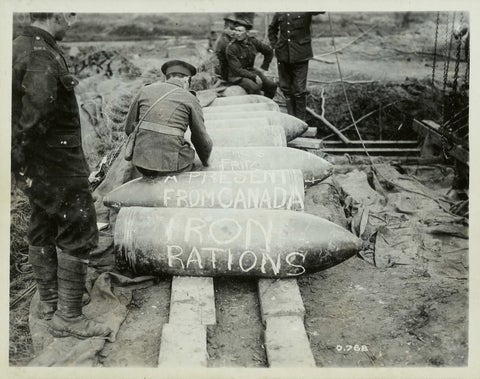
Hazel Scott Pankratz's research focuses on the intersection of technology, the body and lived experience in the Canadian artillery during the First World War.
Presenter
Hazel Scott Pankratz, PhD candidate in History at Western University. Graduate of the Tri-U History program at Wilfrid Laurier University.
Description
The First World War on the Western Front was overwhelmingly a war of artillery. Both sides’ firepower dictated what form the war would take, driving men to dig trenches to conceal and protect themselves, but even then, artillery was responsible for over half of Canadian casualties. Given the significance of its role, it is no surprise that the letters, diaries and memoirs of soldiers make frequent reference to the unending roar of the guns and the damage wrought by shellfire.
Using the senses — namely vision, hearing and touch — this presentation explores the lives of Canadian gunners and demonstrates the ongoing need to look beyond the trenches in order to better understand the diverse experiences of Canadians fighting the First World War.
Sponsors
Laurier Centre for the Study of Canada (LCSC) and Guelph Museums.
Details
Details available through LCSC or Guelph Museums.
The lecture will premiere in-person at the Guelph Civic Museum (address below), and online via their Facebook livestream.
The recorded conversation will be available on Facebook, YouTube, and the Guelph Museum's Everywhere Portal.

Unwelcome Presents. Gunners' graffiti: "iron rations" and "a present from Canada," on 15-inch artillery shells before firing them at the Germans. The word "rations," meaning the food carried by soldiers, is used here with grim irony. From George Metcalf Archival Collection, CWM 19920044-671. Canadian War Museum photo.